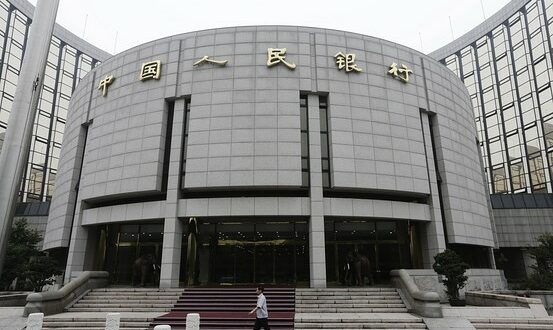A liquidity squeeze in the second half of June is refocusing attention on China’s banks, and not a moment too soon. Much recent discussion has surrounded the broader macroeconomic transformation China needs, away from export- and investment-led growth and toward greater reliance on domestic consumption. But the effect of such a transformation on the country’s financial system remains poorly understood.
To the extent banks have figured into discussions of economic rebalancing, two issues have attracted the most notice. One concern is the level of non-performing loans (NPLs) banks will face as the overall growth rate slows. The economic stimulus package that started in 2008 allowed banking assets to more than double. Credit exposure to real estate companies grew by 100%, and credit to mid-sized companies in the coastal areas grew by 90% even as those firms face higher costs and sluggish exports. In a slower growth environment, NPLs will rise again.
The second risk is the “shadow banking” in wealth-management products (WMP), created by trust companies and snapped up by affluent investors in search of higher returns. Institutions put their reputations on the line marketing these structured products to investors as if they were akin to bank deposits, and the WMPs often constitute large off-balance-sheet liabilities. Regulators so far have been only partially successful in tamping down on these products.
But WMPs and NPLs are hardly the only challenges. With asset growth rates in excess of their returns on equity, Chinese banks will need to raise substantial new capital to sustain growth—between 1 trillion and 2 trillion yuan ($163 billion to $326 billion) in additional capital over the coming five years, based on current credit-growth forecasts. In an era when national and global savings are constrained, raising such levels will be costly. This will place stresses on the current system, but also create an opportunity for reform.
The starting point, which is not obvious to many outside observers, is that customer assets represent only around half of Chinese bank balance sheets. The other half comprises mostly investments in bonds, statutory reserves placed with the central bank and, to a smaller extent, inter-bank balances.
This unusual allocation affects banks’ return on assets. While the return on customer assets remains above 2%, which is high by international standards, the return on the other half is low. With increased pressure on profitability driven by competition and interest-rate liberalization, there will be pressure to allow banks more freedom to redeploy some of the conservative half of their balance sheets to generate higher returns.
That would not be as simple as it sounds. Releasing this capital for more lending would equate to a form of quantitative easing. Part of this excess liquidity on the banks’ balance sheets is directly and indirectly created when foreign currencies are swapped into yuan as part of the management of the exchange rate. To lessen the risk of inflation or domestic asset bubbles thus requires a more open capital account and freely floated currency.
Meanwhile, as the economy shifts toward a more market-oriented domestic engine of growth, the banks’ business model must shift from growth in scale to more differentiated strategies focused on service quality, profits and risk differentiation. Revenue and profit pools will shift dramatically, away from the traditional large corporate and state-related business toward servicing retail customers and small- and medium enterprises.
Large corporate lending represented 52% of all lending in 2006, but it declined to 39% by 2011 and could be as low as 25% in 2021. Within a decade, small- and mid-sized enterprise credit could represent more than half of total lending, up from 37% in 2006, and retail lending could reach up to 25% of loans. SME banking, retail wealth management, consumer finance, and capital markets will grow in importance and could generate 77% of banks’ revenue by 2021 compared to 65% today.
Yet at the moment many banks are ill-equipped to manage this transition and to capture new opportunities. Chinese banks still lag their foreign peers or even Chinese non-financial institutions in terms of their ability to use data they collect to better anticipate customers’ needs; to set prices for their services strategically; and to manage geographically dispersed operations.
As an example of the kind of change banks will need to undergo, consider risk management. Many Chinese banks treat this mainly as a regulatory compliance exercise. They have to come to understand that risk management also has a strategic business purpose and that they need integrate their risk-management judgments into decisions about which business opportunities to pursue to maximize returns—in other words, how to grow smartly.
All of this suggests the challenges facing Chinese banks may be more complex than commonly understood. It also suggests that the twin transformation of the financial system and of the banks’ capabilities needs to happen at the same time. But the opportunities also are great for those institutions that are quickest to adjust to the new realities of a rebalancing economy.
Mr. Sheng is president of the Fung Global Institute. Mr. Pitsilis is a senior partner with McKinsey & Co.’s financial institutions practice in Hong Kong.
WSJ
Photo: reuters
 Asia Finance News Asia finance news, banking, market analysis, business, Forex, trade, Cryptocurrency as it is happening in Asia. Trusted gateway for Asian financial news.
Asia Finance News Asia finance news, banking, market analysis, business, Forex, trade, Cryptocurrency as it is happening in Asia. Trusted gateway for Asian financial news.





